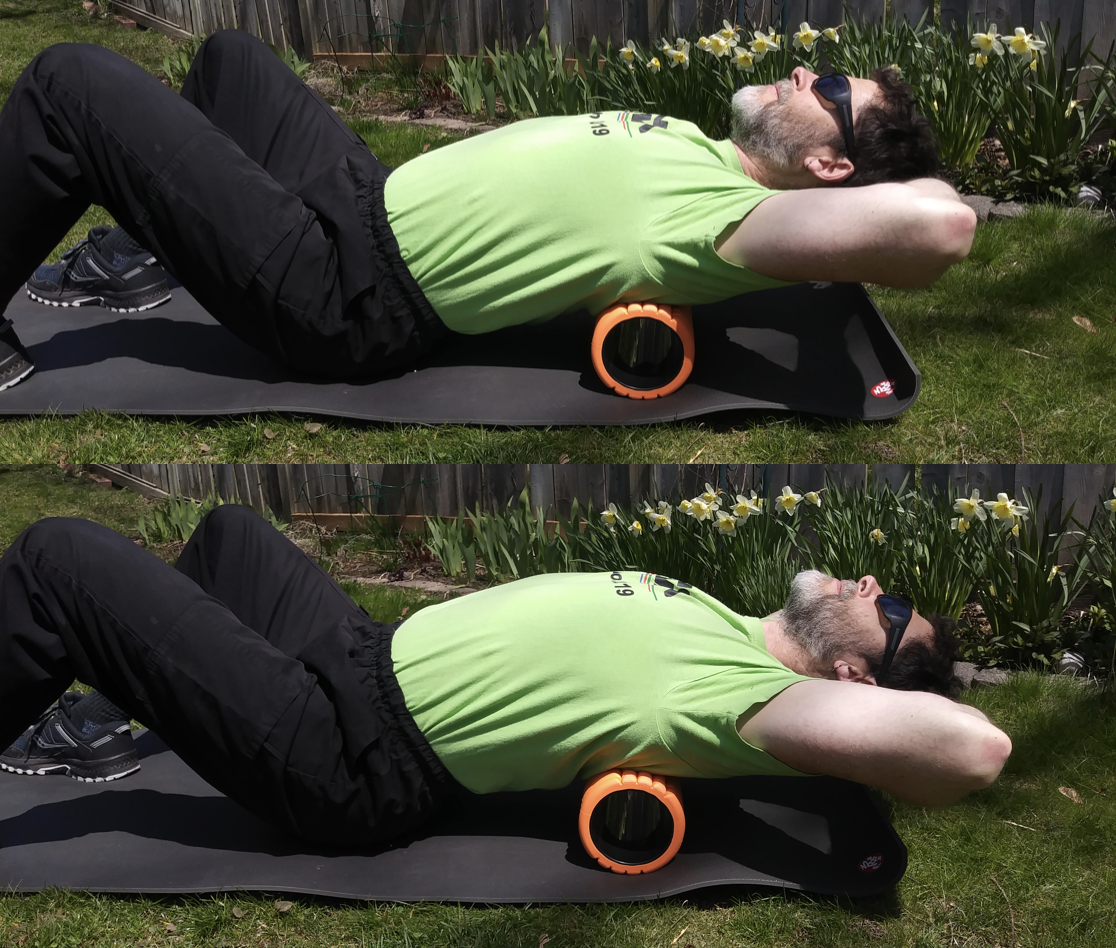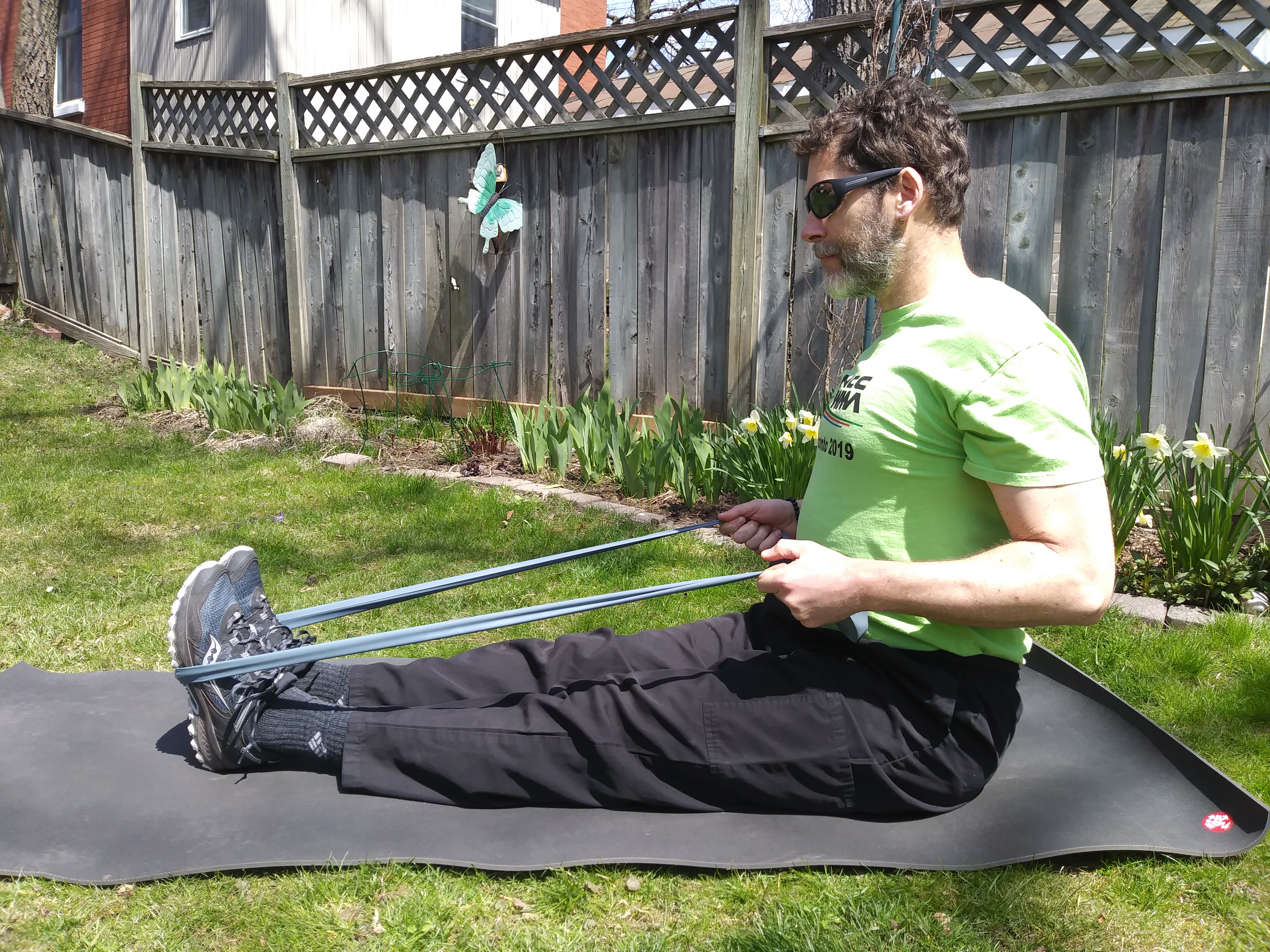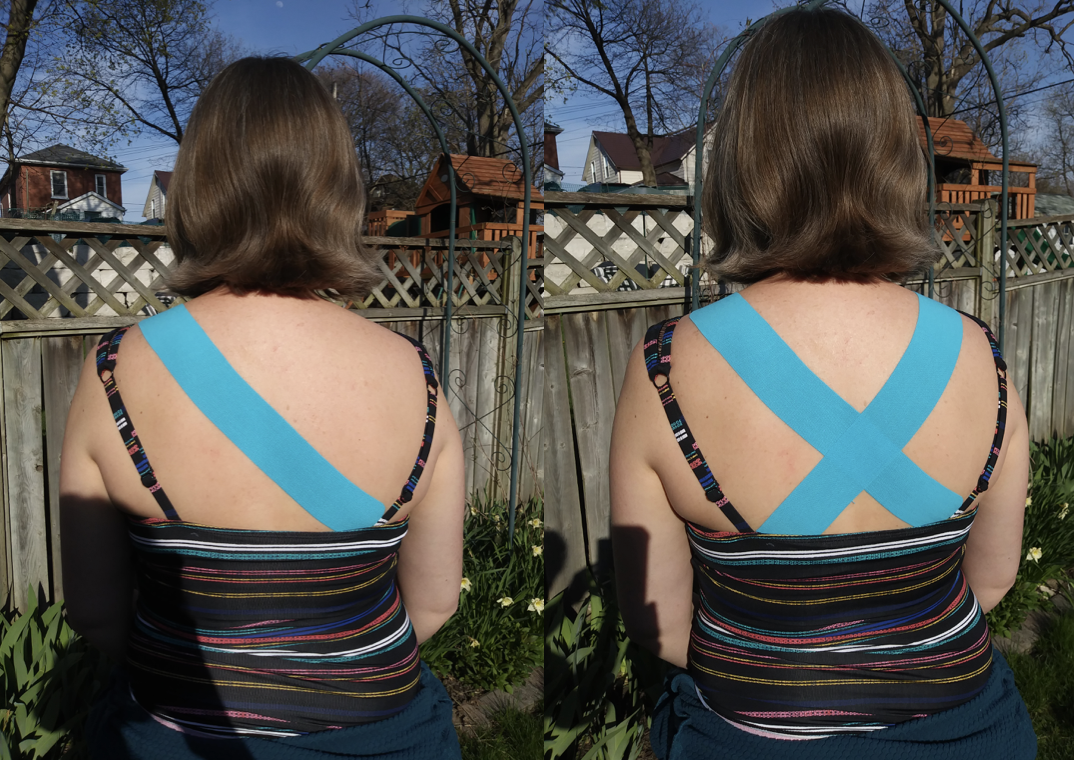By Jeff Kittmer
As a registered massage therapist, I see a large number of clients with chronic back pain. The majority are office workers, drivers, or people who spend a lot of time sitting. Their common complaint: shoulder and neck pain; as well as lower back, hips, and gluteal pain.
The human body is really good at adapting to its environment. When our work environment requires us to sit for prolonged periods, the body will conform to the shape that you place it in. Despite office ergonomics, people still tend to slouch at their desk and keep their hips at a 90-degree angle. This is where the problem lies.
When you look at a person’s posture, you might see that their head is tilted forward, the upper back is hunched, and their shoulders are rounded (Upper crossed syndrome). This is a combination of overactive and underactive muscles in the neck, chest, and shoulders. The muscles of the chest are short and overactive, along with the upper shoulders. You will also notice that their lower back is arched, and the pelvis is tilted forward (Lower crossed syndrome). The core and glute muscles are weak, and underactive; while your quads and erector spinae (the long ropy muscles that run parallel to your spine) are short and overactive.
People also refer to this as the “Tech Neck”. Named after a large number of people in the tech industry hunching over their electronic devices at work and home. Do your shoulders and chest feel tight? Does your partner tend to remind you to stand up straight and not to slouch so much? So, what do you do now?
Mobility, then Stability, then Muscle Proprioception
Here are some tools and techniques to help you bring your body back into balance, realign your posture, and to reduce your back and shoulder pain.
Back Mobility
Starting with mobility, I like to use the Grid Foam Roller to mobilize the upper spine. Lie on the floor resting your shoulder blades on the roller and place your hands behind your head for support. Engage your core to stabilize your lower spine and take a deep breath, lifting your head in a mini crunch with your shoulders still resting on the roller. As you breathe out, relax your upper body and lower your head, letting the roller sink into your back. Repeat this about 7 times. Move the roller down your back so that the roller is just touching the tips of your shoulder blades. Repeat the breathing pattern and let your body sink into the roller as you breathe out. If you find that the roller is too high, use a rolled-up bath towel or yoga mat.

Back Stability & Strengthening
To correct the lower crossed syndrome. Let’s start from the bottom. Quite literally starting at your bottom. Lower onto your hands and knees assuming the table position. Ensure your hands are under your shoulders and knees are under your hips.
As you breathe out, engage your core and extend your leg back with your knee bent. Pressing your foot to the ceiling while maintaining a flat back. As you breathe in, return to table position, hovering the knee off the mat. (10 reps, 3 sets). As a progression, you can lift an arm forward while extending the opposite leg back with knee bent. Returning to table position with your hand and knee hovering. If you need more challenge, add an ankle and hand weight to the mix.
As we rise up the body, we will focus on the upper crossed syndrome. Addressing the weak middle and lower Trapezius muscles between the shoulder blades. An exercise that I like to offer my clients is seated rows with a stretch band. It activates the muscles that hold the shoulders in place and requires you to activate your core simultaneously. I like to use a RockFlex Band for this exercise due to its versatility of multiple handles to increase the tension. Though any stretch band of suitable tension will do.

For the seated row, sit on the floor with your legs straight and loop the stretch band around your feet. Hold the two ends of the band and sit tall activating your core. As you breathe out, pull your shoulder blades together squeezing an imaginary grape between them. Ensure that you are pulling your shoulders down your back towards the floor at the same time. When you breathe in, release the tension on the band and relax your shoulders and straighten your arms. (10 reps, 3 sets)
Back Taping
To assist in training my client’s body from conscious postural engagement to the level of muscular subconscious, I like to use the 2- inch RockTape. The tape acts as a silent coach to remind you to sit/stand tall; like having a Jiminy Cricket on your shoulder to remind you. The best way to apply the tape is to have a therapist do it for you. Or, you can have a friend apply the tape.

Using the tape, have a friend measure from the top of one shoulder to the base of the opposite shoulder blade’s tip. Repeat for the other side, creating two strips and round all the corners. Squeeze your shoulder blades together, realigning your shoulders, and pull them down your back slightly. Tear the paper backing 1-inch from the end, and apply to the top of the shoulder creating an anchor without tension. Remove the paper backing from the rest of the tape except for the last inch at the end and lay the tape diagonally on the back from shoulder to the base of the opposite shoulder blade with paper off tension. Then remove the last inch of paper to apply the second anchor below the shoulder blade. Repeat this for the other shoulder. In the end there will be an X pattern on the back. This will help to activate the posterior muscles in your back to hold your shoulders in place. As well as giving you a tactile cue when you start to slouch.

With the drastic increase of people having to work from home and their workstations being the kitchen counter, coffee table, or their laps. We need to take some time out of the day for self care. Take a break every now and again to roll the spine, activate the core, and go for a walk returning to the world of the upright. You owe it to yourself, and your body will thank you for taking the weight of the world off of your shoulders and back.
Are you a medical Professional and would like to start using RockTape? Sign up for a medical account here and save.
Interested in trying out these exercises? Click here to shop foam rollers, RockBands and RockTape.
